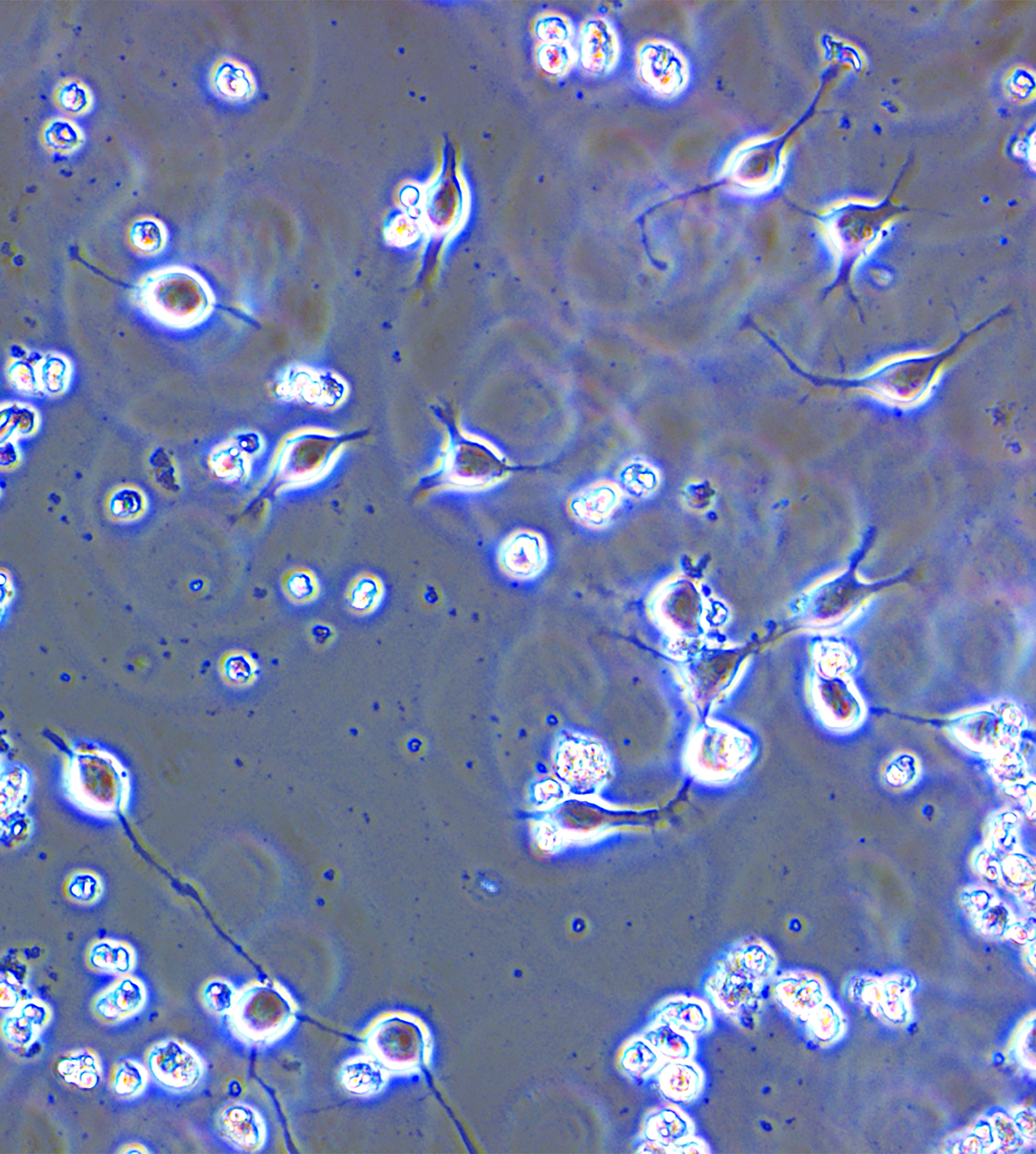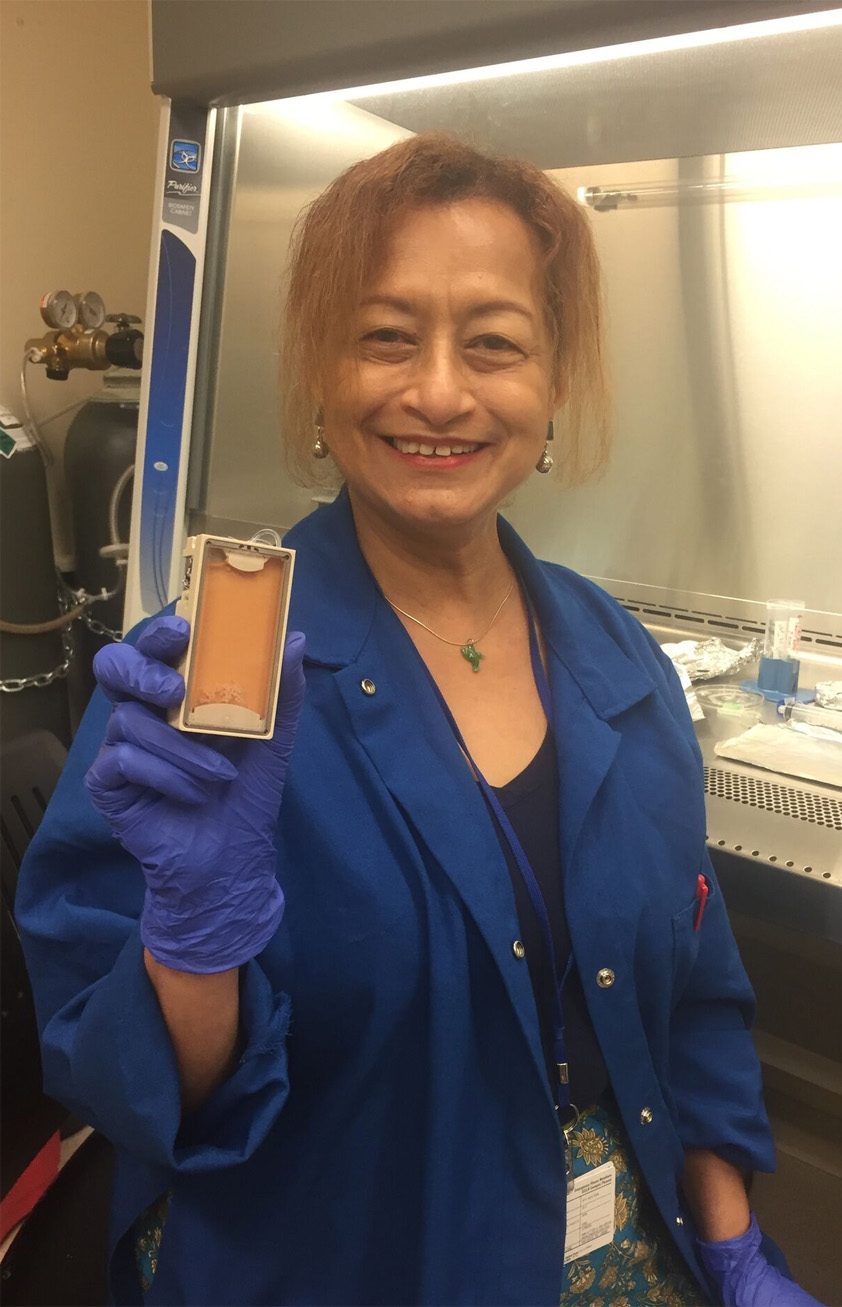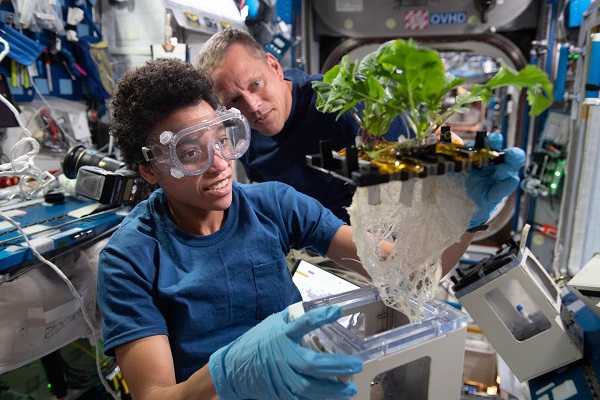The BioScience-4 mission is the first study to investigate the multiplication of nervous system stem cells in microgravity. This experiment will test whether these important cells from the brain and spinal cord divide faster into two daughter cells in the microgravity environment of space. In addition, the experiment will allow scientists to study the cell signaling pathways that determines cell function, proliferation, and differentiation. This mission was launched onboard SpaceX-16 in November 2018 and will be flown again on SpaceX-21 in 2020.
Two types of cells will be studied in this experiment – neural stem cells and oligodendrocyte progenitor cells. Neural stem cells divide to produce all three major nervous system cell types: neurons, and the two kinds of cells that support neurons – astrocytes and oligodendrocytes. Neural stem cells also produce progenitor cells, which are like stem cells because they divide to produce new cells, but are more limited because they cannot divide and produce new cells indefinitely. One kind of progenitor cell produced by neural stem cells is the oligodendrocyte progenitor cell, which become oligodendrocytes. Oligodendrocytes form electrical insulating membranes known as myelin sheaths that coil around neuronal axons, allowing signals to move along nerves at normal speeds, and making these cells vitally important to nervous system health.
The two types of cells for this experiment will be sent to the International Space Station in cell culture hardware designed by Airbus. Once on the station, the cell culture hardware will be installed in the Space Technology and Advanced Research Systems (STaARS)-1 Experiment Facility, where the cells will be given time to grow and divide. After approximately a month, the cells will be returned to Earth, where scientists will measure how much the cells have divided and will identify the proteins that have been secreted.
Increased division of these cells in space may play a role in the intracranial hypertension, or pressure inside the skull, that has been observed during human spaceflight. Because increased intracranial pressure can cause vision problems, headaches, and other serious health problems, it is an obstacle to long-duration space exploration missions, and is an active area for scientific research. Understanding how nervous system stem cells divide in microgravity could help scientists develop suitable countermeasures to protect astronauts from problems with intracranial pressure.
Studying the division of nervous system stem cells could also have benefits for patients on Earth. Cell replacement therapies would greatly benefit people with neurological disorders or neurological diseases like multiple sclerosis, but are not yet practical because no existing method generates stem cells in sufficient numbers, quickly enough. When the cell types that will be used in this study were cultured in simulated microgravity on the ground, they divided faster than cells cultured under normal gravity conditions. Studying the reasons why, and the mechanisms causing these cells to divide faster in microgravity, could pave the way to breakthroughs in stem cell production for cell replacement therapies.
Payload Developer: Space Technology and Advanced Research Systems Inc.
Payload Manager: Elizabeth Pane, NASA Ames Research Center
Mission Scientists: Fathi Kathi Karouia, Ph.D., Amy Gresser, Ph.D., Medaya Torres, and Sungshin Choi, Ph.D., FILMSS, NASA Ames Research Center
Principal Investigator: Araceli Espinosa-Jeffrey, Ph.D., UCLA
Author: Yael Kisel




























